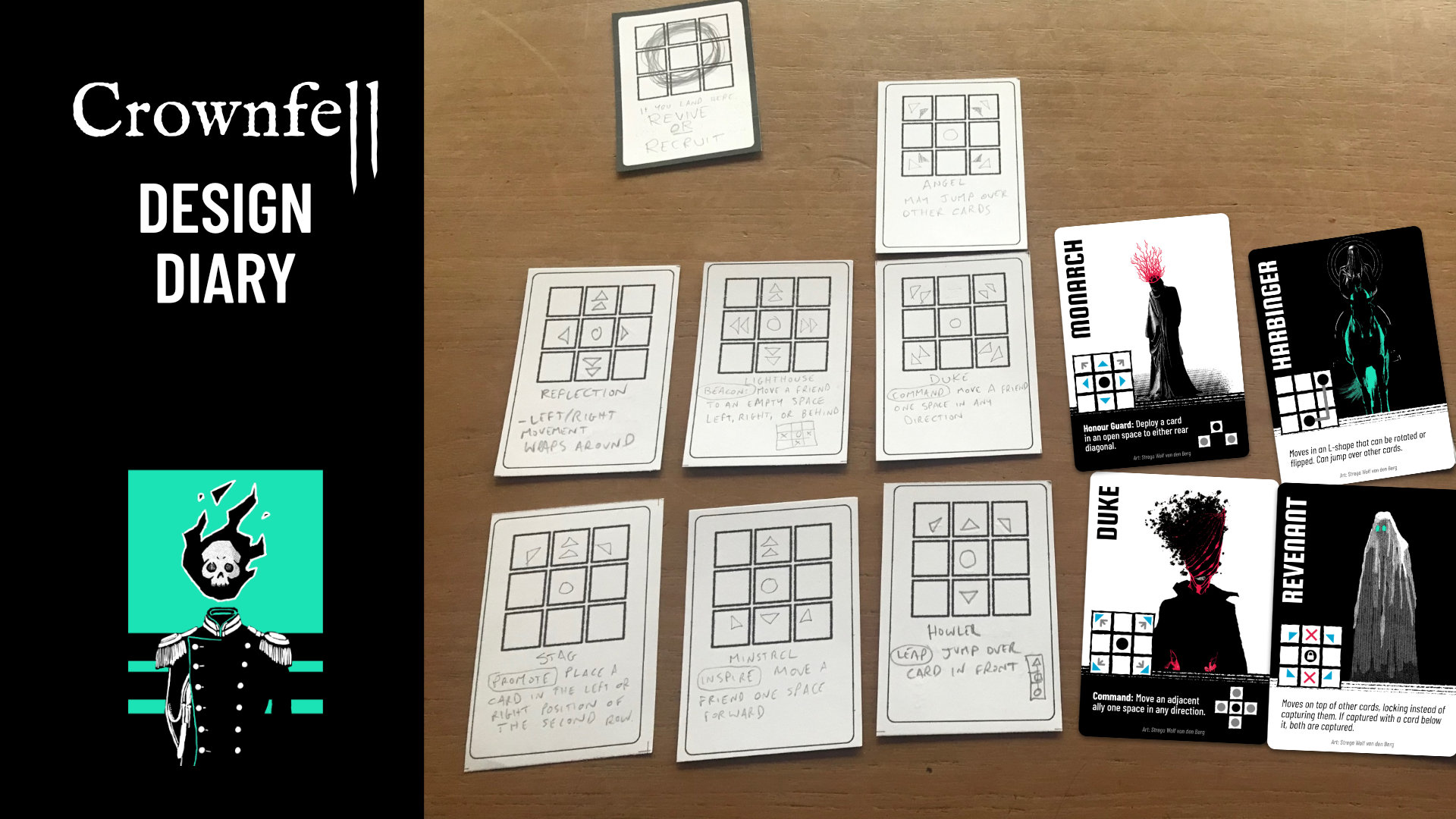It was never meant to be anything more than a joke.
In the fall of 2024, Button Shy announced the latest of their regular design challenges: 18 cards, but you only use 9 each game. If you are a designer and you’ve never participated, I highly recommend it. The 18-card design space is simultaneously restricting and freeing. By necessity, the scope of your design cannot get out of control, and iteration is rapid.
The other benefit is the community. When there’s an active design challenge, the Button Shy Discord server feels like a party; designers new and old share ideas, give feedback, encourage, and thoroughly support each other.
It was into this environment that I casually threw out a joke post, with no intention of following up on it:

Here’s the thing about bad ideas: you never know where they will lead you, if you don’t speak them into existence first.
Chess… but with cards?
Almost immediately after posting what I thought was “just a silly joke to get some laughs”, I knew I had to at least try to make this. The barriers were low: put some chess pieces on some cards. As I mentioned before, with only 18 cards, there’s no reason not to whip together a quick prototype. Restricting and freeing.
I knew right away that simply putting a single king in the middle didn’t make sense. How do both players defend and attack the same card? So the middle card had to be some kind of special space that allowed you to do something extra, as a treat.
The cards themselves provided guidance as to the size of the grid. I had this ninth card that had to be in the middle, which meant the grid needed to have an odd number of rows and columns for there to even BE a middle space — so, 7×7 or 5×5.
A 7×7 grid of cards would be over 17.5” x 24.5”; that instinctively felt like too much table space, so I started with 5×5.
I threw together some cards and put them in playingcards.io and started pushing them around:

I wanted the cards to be an essential aspect of the game, rather than a concession. What could I do with cards that you can’t do with regular chess pieces? The first answer to this came from my own original joke post: the cards are black on one side and white on the other.
I added a rule: land on the centre space, to reclaim any captured card from the discard pile and flip it to your colour. This not only solved the problem of the game being too short due to the small number of cards each player starts with, but created the possibility for wild swings, dramatic plays, and big comebacks. I loved it.
And it just… worked?
It quickly became clear that this was an interesting way to play chess, and the rules were dead simple:
On your turn, take one action:
- Move a card OR
- Play a card from your hand into your home row
If you land on the centre space you perform a “rally” action:
- Pull a card from the discard pile OR
- Play a card from your hand into your home row
Rooks, Bishops, and Queens needed to have their movement capped at 2 spaces, and you couldn’t use any of the special rules like castling or en passant. The goal was simply to capture all of your opponent’s cards.
The back-and-forth of cards “changing sides” made that centre space a focal point, as players jockeyed for position and control. Cards coming back into play felt dramatic and compelling. I had something here.
More than just chess
Discussing the game with friends and fellow designers, I was encouraged to “make it my own”. Chess pieces have the benefit of familiarity, but I quickly realized that I would still need to explain every piece’s movement in the rules… combined with the fact that chess alone doesn’t exactly have a lot of appeal in the modern board game space. I wanted this game to stand out.
That’s when I remembered coming across the stunning artwork of Strega Wolf van den Berg. They have a Creative Comrades Library on their site as an anti-capitalist way of sharing their work with the world… “Work under the CCLA is licensed for free personal and commercial use by anyone except for people and companies who are millionaires.” I had found their site some time before and thought, “I sure would like to use this incredible art in a game some day.”
That day had arrived.

Roaring down the mountain
Shaking off standard chess moves and embracing unique thematic characters based on highly evocative artwork was the stone that started an avalanche.
I scrolled through Strega’s art and immediately had thematic ideas for movement and abilities. I made the most basic card template: a movement grid and space for ability text, and started scribbling… each card leading to more ideas… more new abilities… more cards.
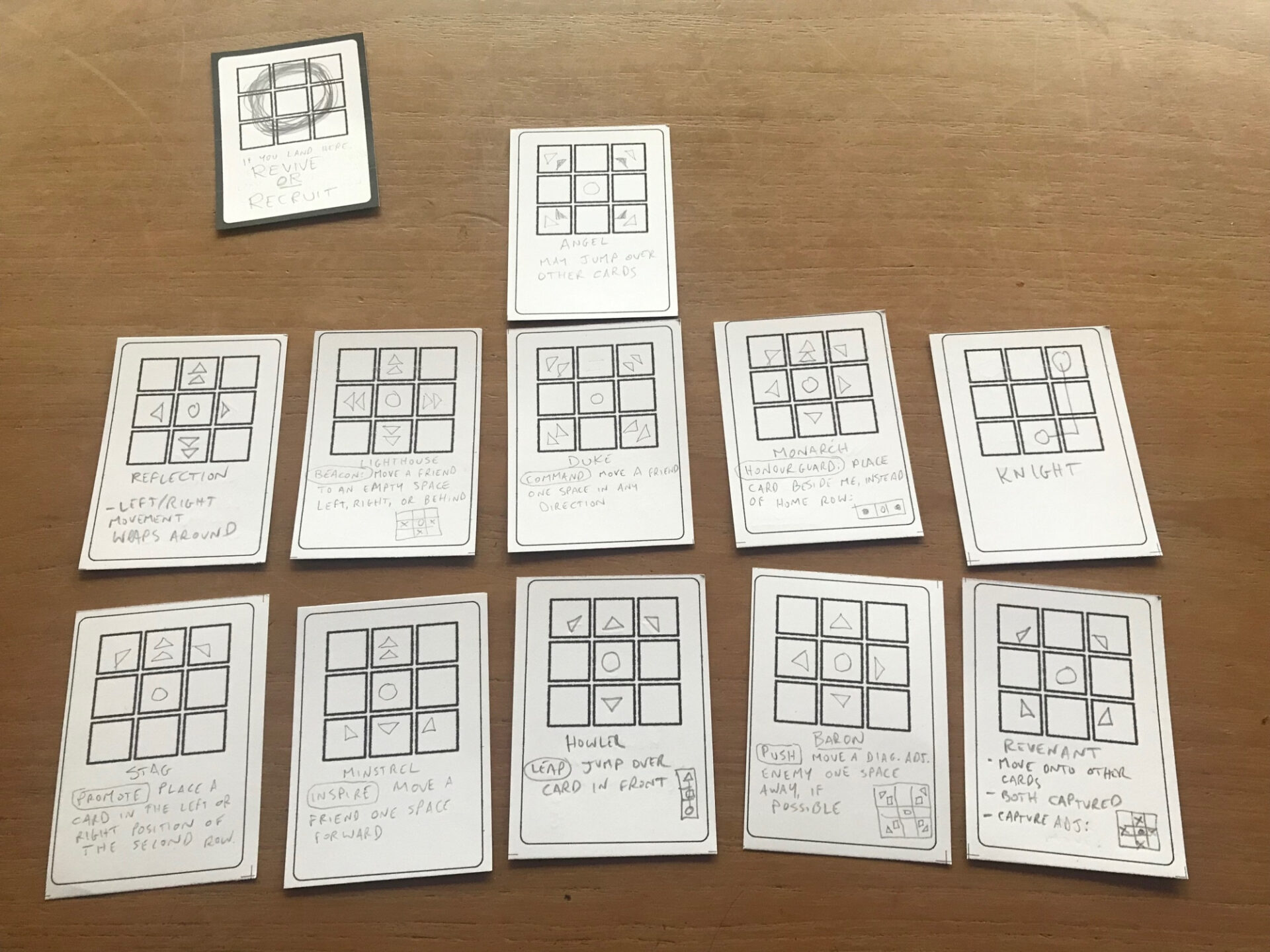
I started with only these eleven cards, but it was enough to play a few games and test out the core mechanics with my son.
As a game designer, you should never feel like you need a “complete game” or “full deck” before starting to playtest. Getting a limited starting set on the table will help you pinpoint gaps to be filled, as well as reveal false assumptions that might have led you to create cards or abilities that you end up throwing away.
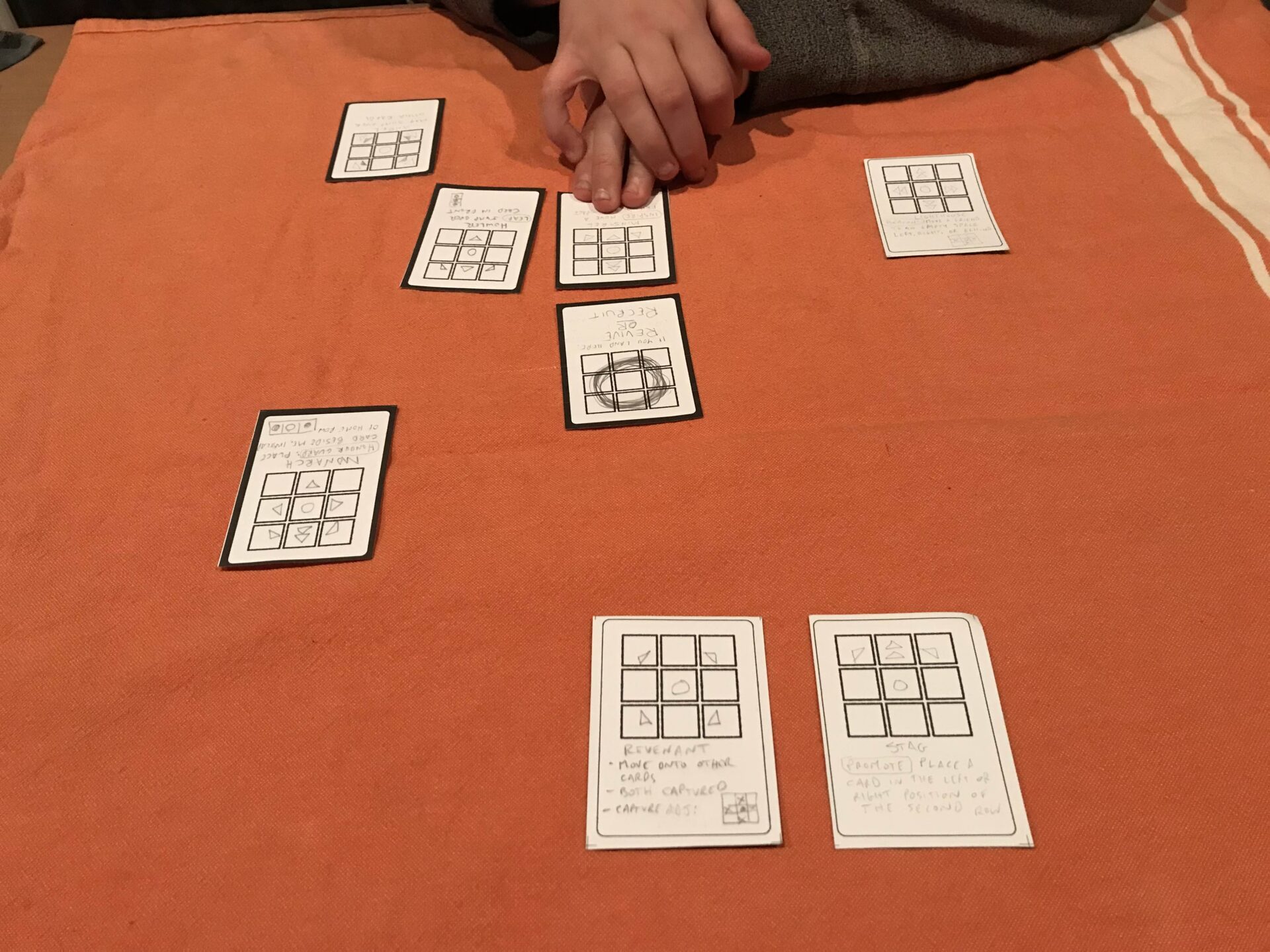
My son and I both loved the game. So much so that he immediately made a playmat for it – because as Dan Thurot said, “The mat isn’t strictly necessary. But neither is chocolate.”
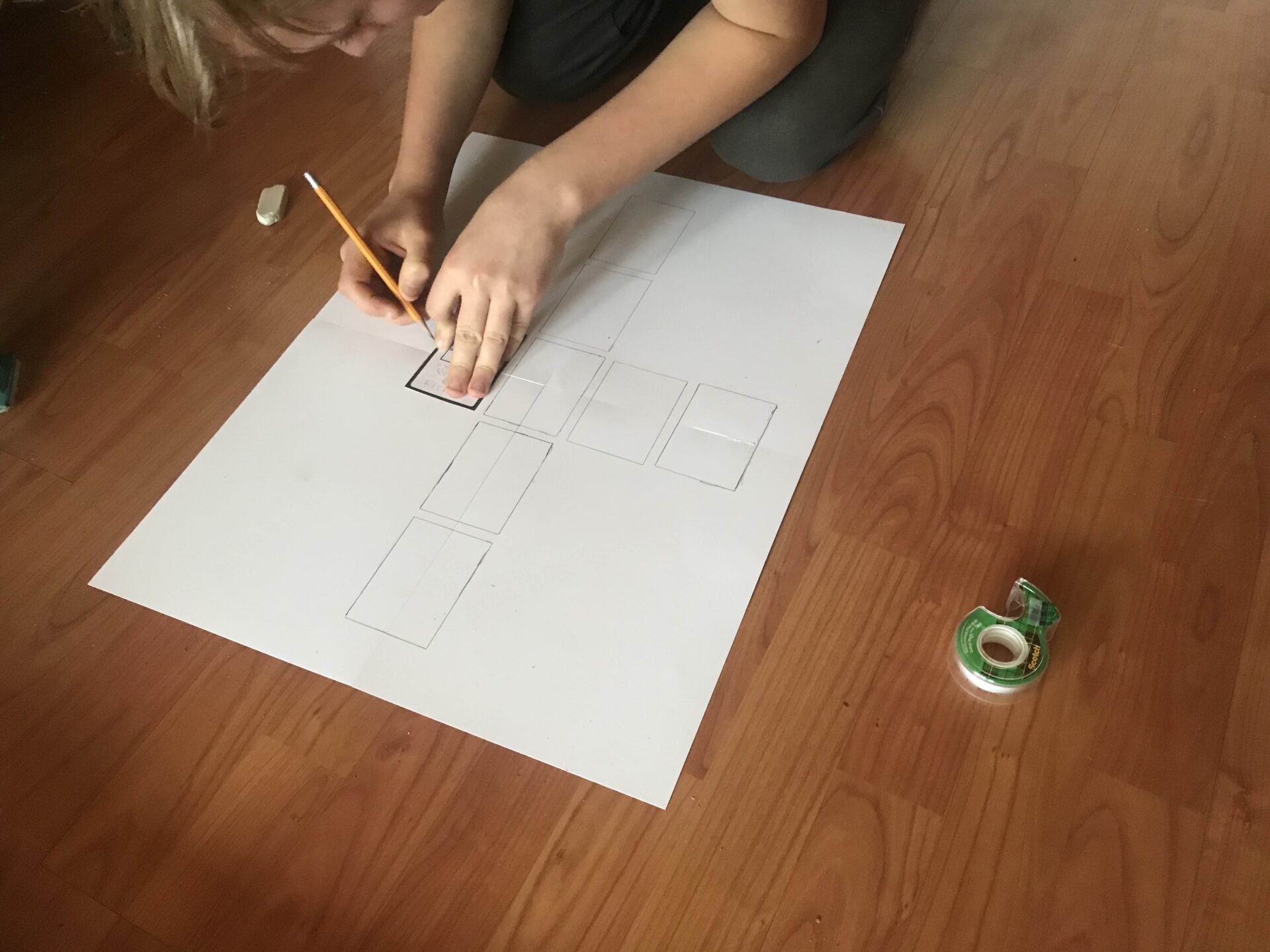
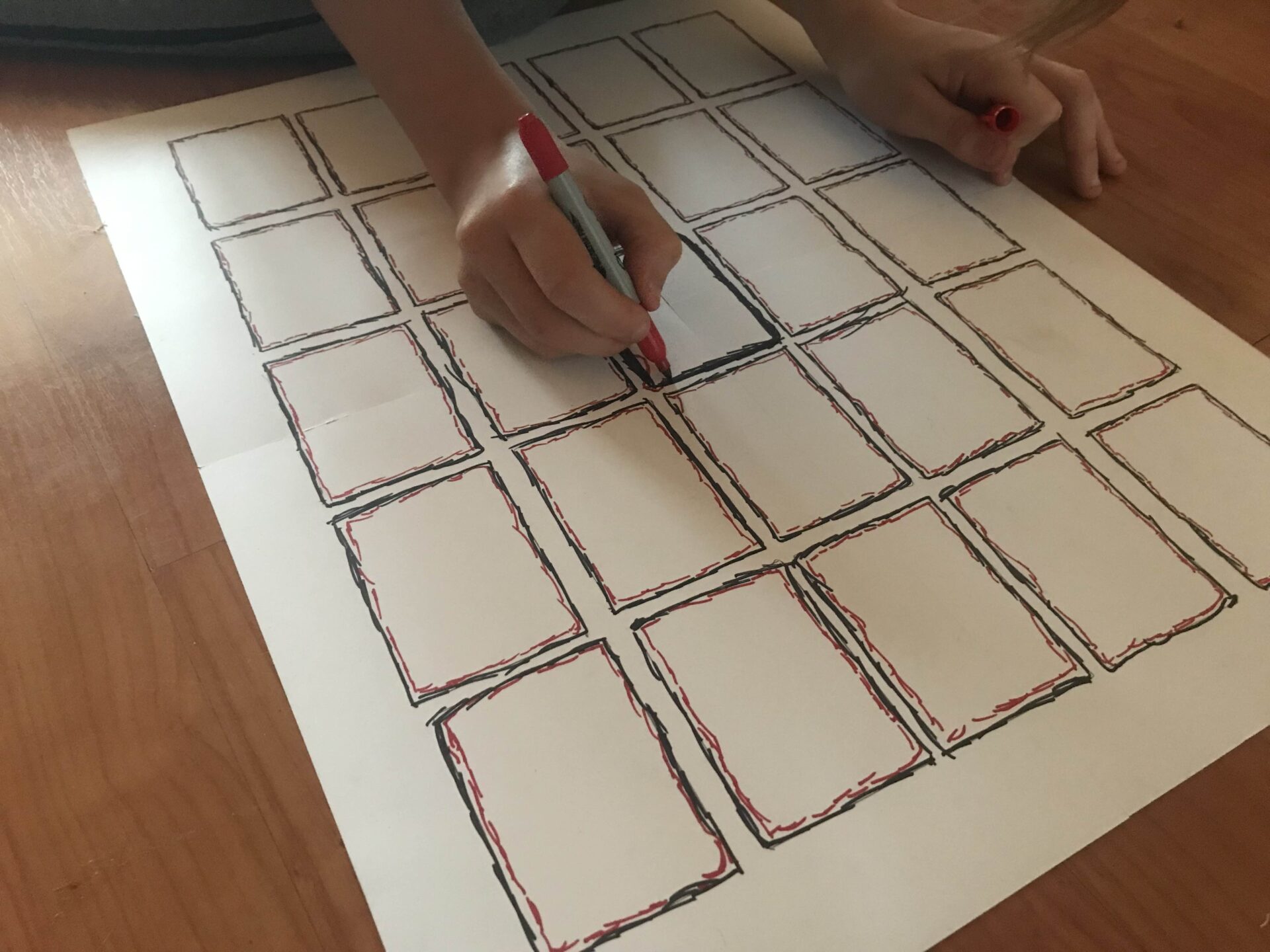

As I said before, the avalanche had started. This creepy mirror dude was begging to have some kind of “reflective” ability, so I gave it the ability to move from one side of the board all the way to the other:
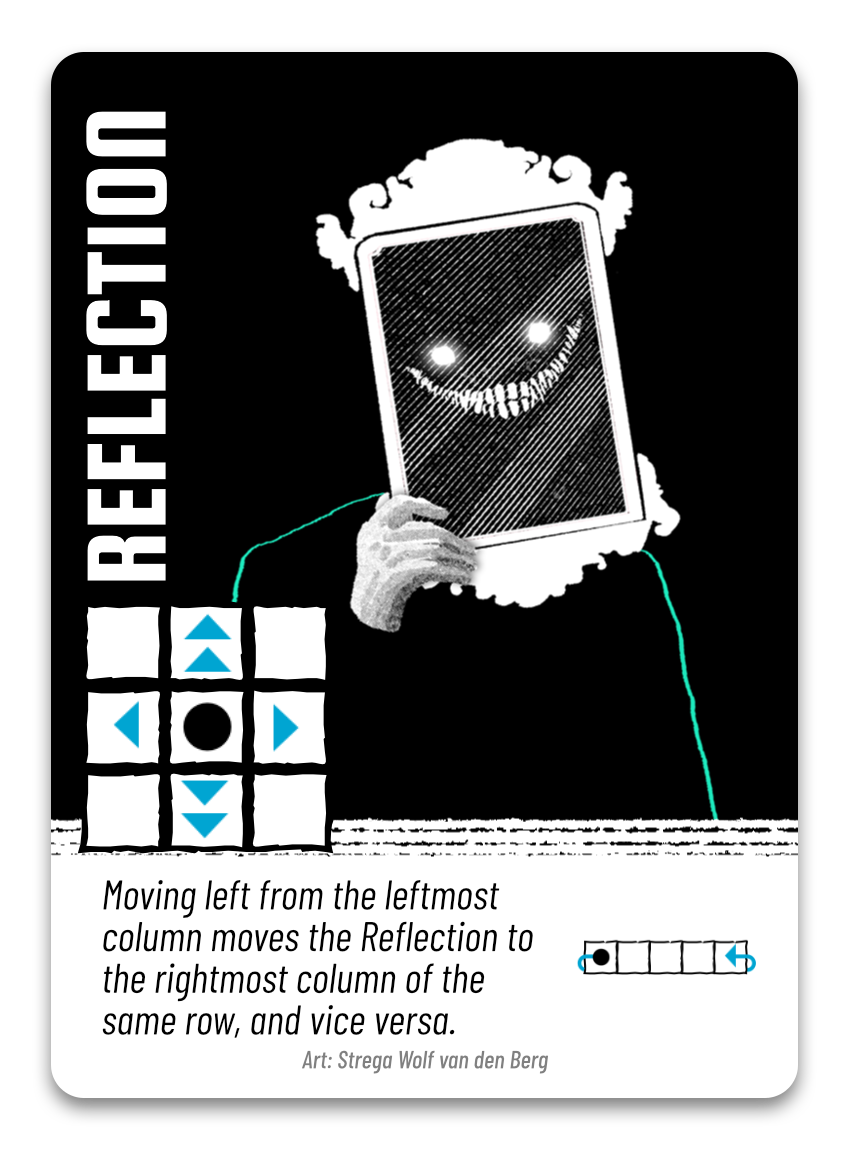
I wanted a ghost that could move “through” other characters without capturing them. This also took advantage of the “pieces” being cards; there’s no easy way to stack chess pieces! This also helped me come up with the locking ability; if the ghost moves onto your space, you are frozen in terror.

And always a fan favourite… a dapper character who just happens to be able to throw fireballs:

I was getting swept away… not only did I have no trouble going from eleven to seventeen character cards, I had to decide which characters would NOT be included in the base game! But don’t worry, some of the cards that didn’t make the cut will hopefully come into play through future expansions.
Refine, refine, refine
I cannot emphasize enough the importance of playtesting. This game required a lot of it. Thankfully “perfectly balanced cards” was not something I needed to stress about. The draft at the beginning of the game — as well as cards changing hands mid-game — allows for more leeway in making some cards that are a bit more bonkers than others. I believe this only enhances the game’s flavour.
But for a game with such simple rules, it was fascinating how tiny tweaks really changed the feel of the game overall. Here are a couple things that were added and then removed from the game:
- You could rally from the centre space AND from your opponent’s home row. I liked the parallel with chess (moving a pawn to the back row to get a bonus) and I also liked that it encouraged you to push farther into “enemy territory”… but it provided too many edge cases and weird questions. It also made the games last too long because it was too easy to bring cards back from the discard pile.
- You started the game with two cards on the board. To win, you only had to bring your opponent down to one card, AND have control of the centre space. This made the games too short, so much so that it was unsatisfying. “Oh, and I guess the game is over now because you only have one card left.” It was not the game I had in mind; a satisfying victory required elimination of all your opponent’s cards.
Getting the rules to be clear enough also took many different playtesters’ eyes on the game. Critical clarifications for the movement icon rules were happening just days before going to print! It’s so important to get fresh eyes on your game and its rules multiple times before finalizing things. I appreciate all the people that helped me get Crownfell to the place it is today.
As the dust settles…
The avalanche was quite a ride, and now Crownfell is finished and I’m very happy with the resulting game. Strega’s art is amazing, and I plan to make a donation to them from the profits of the game. Crownfell would absolutely not be what it is today if not for their artwork and their willingness to share it. I want to support that spirit, and their continued creative endeavours.
The Crowd Sale for Crownfell is finishing today. I’m grateful for every single person who decided that this little game is worth their hard-earned money.
Who knew that a silly joke post would turn into a project like this. I can’t wait for you to play it.
What next?
The crowdfunding campaign has now ended; you can get the game The Game Crafter. Thank you to everyone who purchased it. If you know anyone who might be interested in this kind of game, word of mouth is the most powerful tool for small, one-person “studios” like me.

I also want to talk about the solo mode and the Metal Edition, but those are stories for another day!
Thanks for reading!
Keep playing,
-Mike
